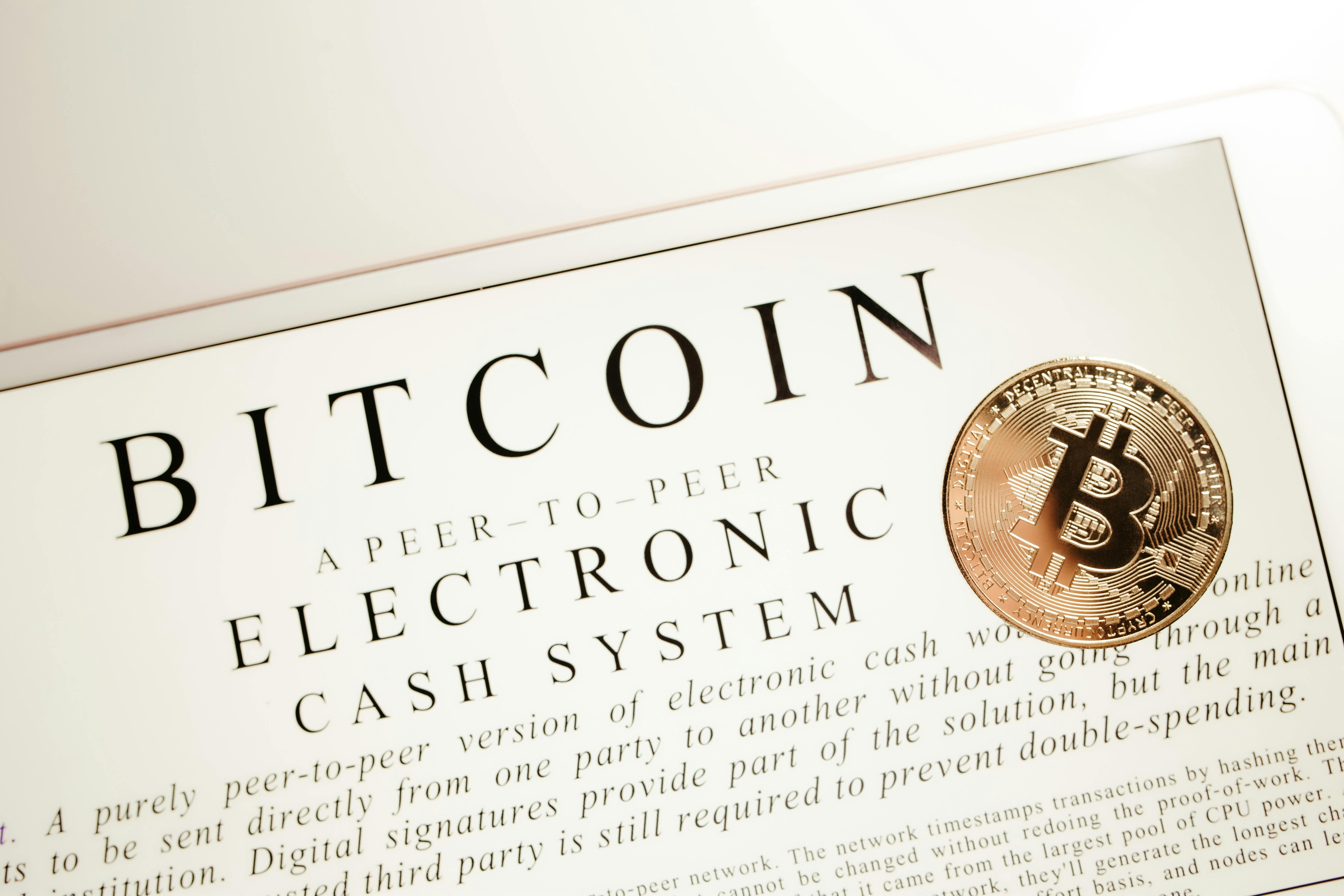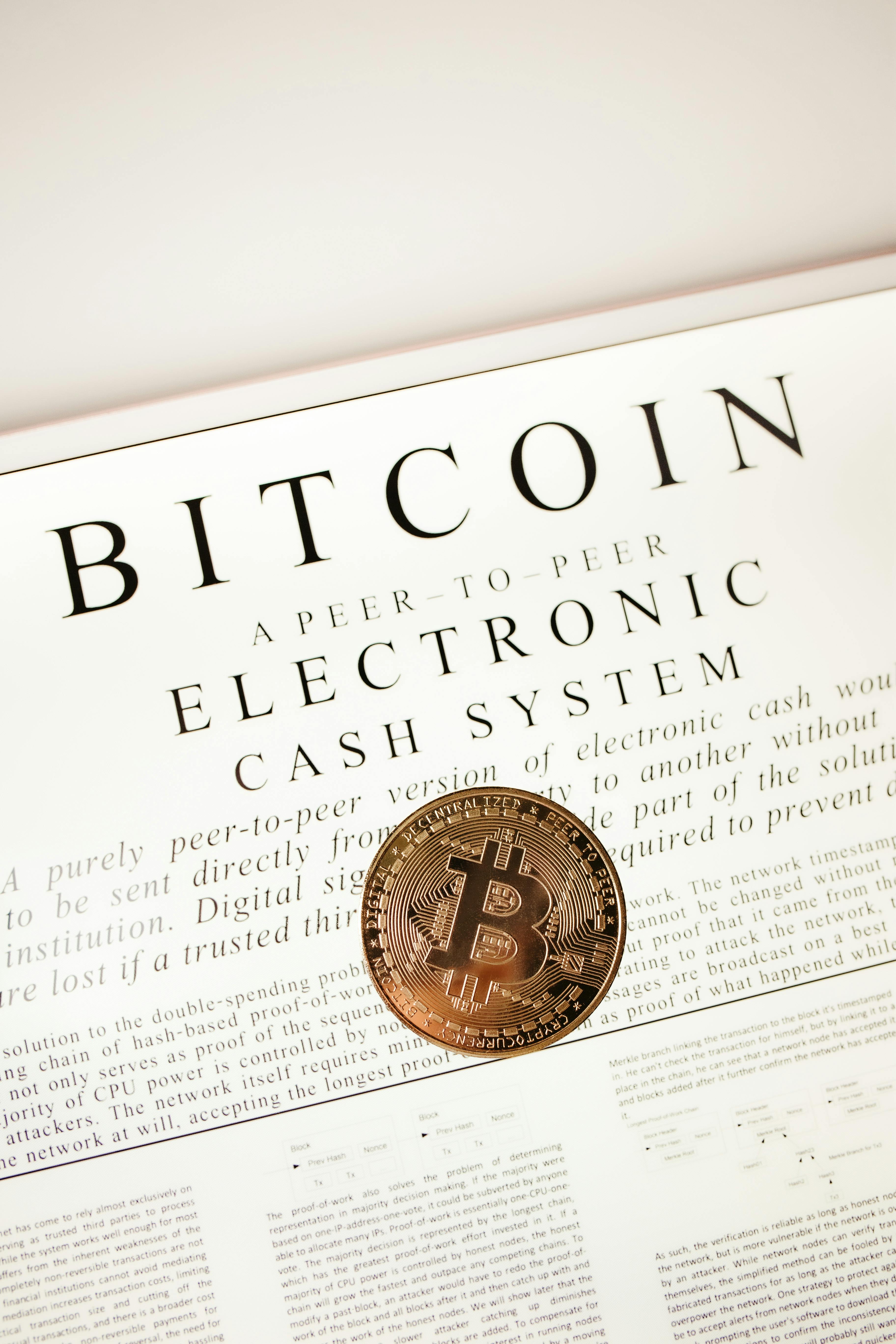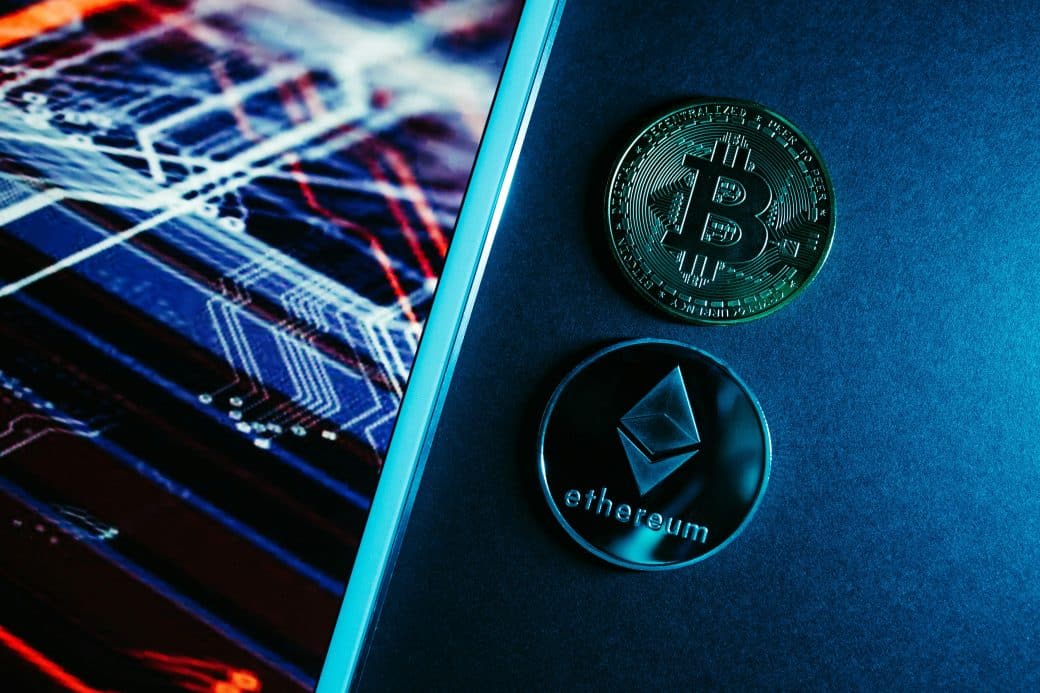So, I’m about to take you on a fascinating ride through the world of modern digital art trends. Imagine a kaleidoscope of creativity, where technology meets imagination, meshing together to form art that’s not only visually stunning but also deeply impactful. Throughout this journey, I’ll be sharing insights and stories behind the most innovative digital artwork out there, exploring how artists are pushing boundaries and constantly redefining what art can be in this digital age. Trust me, it’s a trip you won’t want to miss.

Defining Modern Digital Art
Understanding the concept of digital art
From my perspective, digital art is like a vast ocean of creativity, where one can swim amidst the waves of pixels and coding to fabricate visuals that were once deemed impossible. It’s an art form where artists use digital technology as the essential part of the creative or presentation process. It’s fascinating how something that began as simple binary codes can now produce masterpieces that resonate with emotions and thought.
The evolvement of digital art over the years
Over the years, digital art has transformed significantly. I remember when it was all about pixelated images and basic computer-generated graphics. Today, it has evolved into an array of incredibly sophisticated forms, from 3D modeling to digital painting, and even interactive art. The evolution doesn’t only signify technological advancements but also reflects how artists have embraced these tools, expanding the boundaries of what’s considered art.
Various types of modern digital art
Exploring modern digital art is akin to diving into a kaleidoscope of creativity. There’s something for everyone. We have 3D art that’s so lifelike it’s hard to distinguish from reality, vector art that offers clean and precise lines ideal for illustrations, and digital painting that brings the traditional brushstrokes to the digital canvas. Then there’s also pixel art, preserving the nostalgia of the early computer graphics era, among many others.
The impact of technology on digital art
The fusion of technology and art has revolutionized how we perceive, create, and interact with art. Advances in software and hardware have democratized art creation, enabling artists to craft masterpieces from the comfort of their homes. Technology has not just influenced the aesthetics but also expanded the reach of art, making it more accessible to a wider audience through digital platforms.
The Emergence of VR and AR in Digital Art
Defining VR and AR technology
Virtual Reality (VR) and Augmented Reality (AR) have emerged as game-changers in the digital art landscape. VR transports users to a fully immersive digital world, offering a 360-degree experience. On the flip side, AR melds the digital and physical worlds, overlaying digital information onto our real-world environment. Both technologies offer unique platforms for artistic expression and experience.
Impact of VR and AR on modern digital art
VR and AR have redefined interaction within the realm of digital art. They’ve transformed passive viewers into active participants, engaging in immersive experiences that traditional art mediums can’t offer. Artists now have the capability to create environments that engage multiple senses, paving the way for a new genre of experiential art that’s both dynamic and interactive.
Examples of outstanding VR/ AR digital art pieces
Reflecting on standout VR and AR art pieces, works like “In the Eyes of the Animal” by Marshmallow Laser Feast come to mind. It’s an immersive VR experience that allows you to perceive the forest through the sensory perspectives of different animals. Another remarkable example is “AR-T,” an app that uses AR to bring traditional artworks to life, offering a new dimension of interaction with art.
Future projections for VR and AR in digital art
The potential for VR and AR in digital art is boundless. I anticipate an era where these technologies will become more accessible to artists and audiences alike, fostering a new wave of creativity that blurs the lines between the digital and physical world. We might see more collaborative works, where artists from diverse backgrounds converge in virtual spaces to co-create immersive art experiences that challenge our perception of reality.

Algorithmic and Generative Art Revolution
Explanation of algorithmic and generative art
Algorithmic and Generative Art is where mathematics meet muse. It involves creating art through algorithms, where artists set certain rules or codes, and the art piece evolves within the confines of these parameters. It’s like planting a seed and watching it grow in unexpected ways, with each creation unique to its algorithmic conditions.
The benefits of using algorithms in art creation
Utilizing algorithms in art offers an unprecedented level of unpredictability and originality. It’s a form of collaboration between the artist and machine, leading to creations that can sometimes surpass the imagination of the artist. Additionally, it allows for the exploration of complex patterns and designs that would be incredibly time-consuming or impossible to create by hand.
Notable algorithmic and generative art artists
Artists like Sol Lewitt, known for his wall drawings and conceptual pieces, laid the groundwork for algorithmic art, emphasizing the idea over the artifact. In the digital realm, Casey Reas and Ben Fry, creators of Processing, have significantly contributed by providing a platform that democratizes the creation of algorithmic art, enabling artists and non-artists alike to explore computational creativity.
Critical perception of algorithmic and generative art
While some purists argue that the detachment from traditional, hands-on creation results in a lack of emotional depth, I believe algorithmic and generative art open up new dialogues about the role of the creator and the creative process itself. It challenges the notion of authorship and originality in art, pushing the boundaries of what art can be in the digital age.
Trending Neon Aesthetics in Digital Art
The appeal of neon aesthetics
There’s a pulsating allure to neon aesthetics that captivates the eye and draws you into a digital dreamscape. It’s reminiscent of the vibrant nightlife and futuristic landscapes, offering an escape into a world that’s alive with color and light. The neon glow against the dark has a way of highlighting emotions, creating a mood that’s both nostalgic and forward-looking.
Role of neon aesthetics in contemporary digital art
Neon aesthetics have carved a niche within digital art, symbolizing the melding of modernity with nostalgia. They bring a distinct energy and vibrancy that’s hard to replicate with any other palette. In contemporary digital art, neon serves not just as a color scheme but as a storytelling tool, encapsulating themes of cyberpunk, futurism, and digital noir.
Key artists championing the neon aesthetics trend
Artists like James White of Signalnoise Studio stand out, with his retro-futuristic designs that hark back to the 80s while pushing the boundaries of digital design. Another notable artist is Kidmograph, whose work is teeming with neon-infused, animated visuals that feel like a glimpse into a neon-drenched cybernetic realm.
Exploring interpretations of neon aesthetic artwork
Interpreting neon aesthetic artwork is like peering through a kaleidoscope of possible futures. It can evoke a sense of nostalgia for the digital utopias envisioned in the late 20th century, while simultaneously representing the unbounded possibilities of digital expression. The vibrant colors against the backdrop of darkness could symbolize hope amidst uncertainty, a beacon lighting the way towards the future.

The Growth of 3D Modeling in Digital Art
Understanding 3D modeling in art
3D modeling is like sculpting, except your clay is pixels and your hands are algorithms. It involves creating three-dimensional objects and environments digitally. This form of art allows for intricate detailing and realism that can breathe life into creations, making them almost indistinguishable from the physical world.
The use of 3D modeling in digital art creation
In digital art, 3D modeling has been revolutionary, enabling artists to construct complex and dynamic scenes that are visually stunning. It’s used across various fields, from animation and gaming to architecture and product design, proving its versatility. The ability to visualize creations in three dimensions has opened up new avenues for artistic expression and storytelling.
3D modeling software utilized by artists
Software like Blender, Autodesk Maya, and ZBrush are popular tools among 3D artists. Blender, being free and open-source, has democratized 3D art, making it accessible to beginners and independent artists. Meanwhile, Maya and ZBrush cater to professionals looking for advanced features, offering powerful capabilities in animation and high-definition sculpting, respectively.
Reviewing eye-catching 3D digital art pieces
The range of eye-catching 3D digital art pieces is vast and varied. From the hyper-realistic portraits that challenge our perception of reality to fantastical worlds that exist beyond the bounds of our imagination, 3D art has the power to transport viewers. Pieces like “Commuters” by Mike Winkelmann, also known as Beeple, showcase the incredible detail and creativity that can be achieved with 3D modeling.
The Rise of Digital Painting
Exploring the concept of digital painting
Digital painting merges the traditional art of painting with modern technology, using software and digital brushes to create artworks that emulate the textures and blending of physical paint on canvas. It’s a digital evolution of an age-old practice, offering a new medium through which artists can express their creativity without the constraints of physical materials.
Techniques used in modern digital painting
Modern digital painting harnesses a variety of techniques, from blending and layering to mimicking the brushstrokes of oil or watercolor paint. Artists have the freedom to experiment with an endless palette of colors and a range of virtual brushes, allowing for detailed and diverse artistic expressions. Techniques like pressure sensitivity and opacity control further enhance the realism and depth of digital paintings.
The influence of digital painting in the art industry
Digital painting has made a significant impact on the art industry, broadening the scope of what’s possible and accessible to both artists and audiences. It has opened up new markets, from concept art for games and movies to digital galleries and prints. Moreover, it allows for easier revisions and iterations, making the creative process more flexible and forgiving than traditional painting.
Showcasing transformative digital painting artworks
Showcasing transformative digital painting artworks reveals the astonishing range and depth of this medium. Pieces like “A New Dawn” by Loish (Lois van Baarle) exemplify the vibrant color and emotion that digital painting can convey, while the works of Craig Mullins demonstrate the potential for breathtaking landscapes and scenes. These artworks not just display technical prowess but also tell captivating stories, pushing the envelope of digital expression.

Motion Graphics as a Modern Digital Art trend
Defining motion graphics within the realm of digital art
Motion graphics stand at the crossroads where graphic design meets animation. It involves animating graphic elements—text, shapes, logos—to create the illusion of motion or rotation. This digital art form is not just about aesthetics; it’s about storytelling, conveying messages through dynamic visuals that capture and retain attention.
The use of motion graphics in modern art
In modern art, motion graphics have found a versatile application, from the opening titles of movies to immersive digital installations. It has the capability to enhance narratives, adding depth and dimension to stories. The convergence of audio and visual elements in motion graphics creates an engaging user experience that static images alone cannot achieve.
Skill-sets necessary for creation of motion graphics
Creating motion graphics requires a blend of skills—graphic design, animation, and video editing, to name a few. Familiarity with software like Adobe After Effects, Cinema 4D, and Adobe Premiere Pro is crucial. Beyond technical skills, a good motion graphic artist also needs a strong sense of timing and storytelling to craft compelling narratives that resonate with viewers.
Examining intriguing motion graphics art pieces
Examining intriguing motion graphics pieces like the title sequence of “Stranger Things” or the visually captivating infographic videos by Kurzgesagt showcases the power of this medium. These examples highlight how motion graphics can create an atmosphere, convey complex information in an understandable manner, and evoke emotional responses, making them a compelling form of modern digital art.
Pixel Art in the Contemporary Art Scene
Understanding Pixel Art as a form of digital art
Pixel Art harks back to the early days of computer graphics, where artists would manipulate individual pixels to create images. It’s a form of digital art that embraces the limitations of pixel resolution to produce visuals with a distinctive, blocky appearance. Despite or perhaps because of its simplicity, pixel art has a nostalgic charm and a timeless appeal.
Revival of Pixel Art in the modern digital art world
In the modern digital art scene, there’s been a fascinating revival of pixel art, fueled by a sense of nostalgia and an appreciation for its aesthetic simplicity. It’s not just relegated to indie games or retro design; pixel art has been embraced across various mediums, including music videos, digital galleries, and social media, proving its enduring relevance and adaptability.
Significant artists in the Pixel Art niche
Artists like eBoy, known for their intricate pixel art scenes (or “pixoramas”), and Octavi Navarro, with his detailed storytelling through pixelated landscapes, are significant figures in this niche. Their work not only pays homage to the pixel art of old video games but also pushes the boundaries of what can be achieved with this medium, crafting complex compositions that are both nostalgic and innovative.
Analyzing impactful Pixel Art compositions
Analyzing impactful pixel art compositions reveals a depth of creativity and expression within the constraints of the medium. Works like “Tokyo Pixel” by waneella (Waneella Chaliapin) encapsulate the vibrant energy of cityscapes through meticulously placed pixels, showing how this art form can capture the essence of a scene in a way that feels both familiar and fresh.
Influence of Social Media on Digital Art Trend
Exploring the relationship between social media and digital art
I’ve observed how social media has become a vital platform for digital artists to showcase their work and engage with a global audience. It’s not just a medium for exposure; it’s a space for collaboration, feedback, and community building. Social media platforms have lowered the barriers to entry for aspiring artists, making it easier to share their creations and find their niche.
Social media platforms that support digital art exposure
Platforms like Instagram, Behance, and ArtStation have become pivotal for digital artists looking to gain exposure. Instagram, with its visual-centric approach, is ideal for artists to share their portfolios and connect with fans. Meanwhile, Behance and ArtStation provide platforms specifically geared towards creatives, offering more specialized tools for showcasing art and discovering job opportunities.
Role of social media in promoting digital art trends
Social media plays a significant role in promoting digital art trends, acting as a catalyst for the spread of new styles and techniques. Viral artworks can quickly influence the creative direction of countless artists, fostering a dynamic and ever-evolving art scene. Additionally, hashtags and social media challenges encourage participation from artists of all skill levels, contributing to the trend’s momentum.
Case studies of social media’s impact on digital artists’ careers
The impact of social media on digital artists’ careers is undeniable. Artists like Loish (Lois van Baarle) and Ross Tran have leveraged platforms like Instagram and YouTube to build substantial followings, which has opened doors to freelance opportunities, collaborations, and merchandise sales. Their success stories highlight the power of social media not just for exposure but as a cornerstone for building a sustainable career in art.
Crypto Art and NFTs in the Digital Art World
Defining Crypto Art and NFTs
Crypto Art refers to digital artworks authenticated through blockchain technology, represented as Non-Fungible Tokens (NFTs). NFTs are digital certificates of ownership and authenticity, making each piece of digital art unique and tradeable on the blockchain. It’s a concept that’s revolutionizing how we think about digital ownership and art collection.
How Crypto Art and NFTs are revolutionizing the digital art market
The advent of Crypto Art and NFTs is transforming the digital art market by providing a way for digital artists to monetize their work directly. It’s creating a new paradigm of art collecting, where digital pieces hold tangible value and rarity. These technological advancements are breaking down traditional barriers in the art world, presenting opportunities for artists and collectors alike to engage in the digital economy.
Prominent artists who have delved into Crypto Art and NFTs
Artists like Beeple (Mike Winkelmann) have become synonymous with the Crypto Art movement, with his piece “Everydays: The First 5000 Days” selling for a record-breaking $69 million. Other notable artists exploring this space include Pak, Trevor Jones, and Refik Anadol, who are pushing the boundaries of digital art and its market value through NFTs.
Analyzing controversial aspects of Crypto Art and NFTs
While Crypto Art and NFTs hold promise, they’re not without controversy. Concerns have been raised regarding the environmental impact due to the energy consumption of blockchain transactions. Additionally, the market has witnessed speculation and volatility, raising questions about the sustainability of high art prices. It’s a complex and evolving conversation, representing both the potential and challenges of merging art with blockchain technology.
Embarking on this journey through the landscape of modern digital art reveals a dynamic and innovative realm where technology and creativity converge. From the immersive experiences offered by VR and AR to the nostalgic charm of pixel art, the trends shaping the digital art world are as diverse as they are fascinating. As artists continue to push the boundaries of what’s possible, it becomes evident that digital art is not just about the final creation but the journey of exploration, expression, and connection. It’s a testament to the enduring human spirit to create and share beauty in all its forms, propelled into new dimensions by the digital age.
Sources
- https://www.tworiversmarketing.com/blog/unveiling-the-hottest-graphic-design-trends-of-2024-a-creative-odyssey
- https://www.linkedin.com/pulse/unveiling-tapestry-graphic-design-journey-through-history
- https://news.marriott.com/news/2021/12/04/marriott-bonvoy-logs-into-the-metaverse-with-debut-of-travel-inspired-nfts



